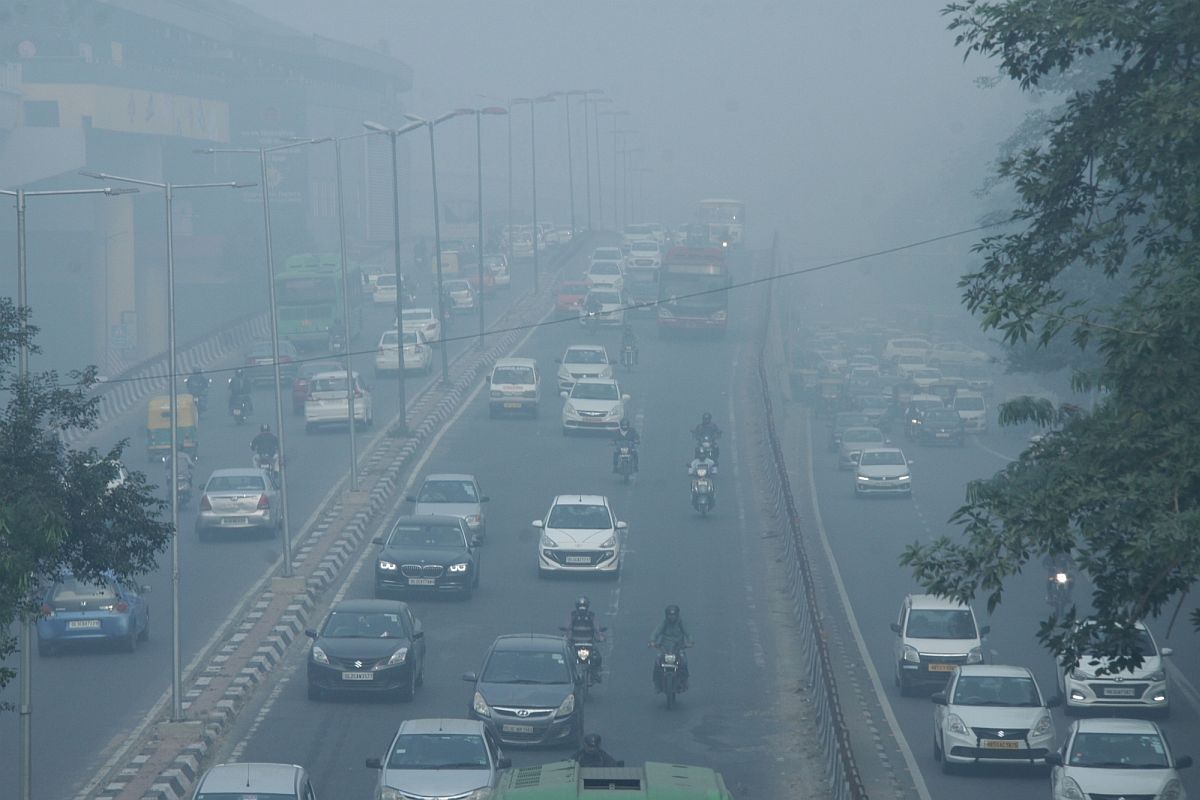LG writes to Kejriwal, says Delhi model shrouded in haze of smog
Saxena said over the last two years he flagged the issue of air pollution in the capital by writing to him and Chief Ministers of neighbouring states.
At the same time, by subsuming in a sense the powers of state governments and pollution control boards, it has accepted a substantial political risk, for it will no longer be possible to blame the problem on recalcitrant states, a common occurrence in recent years when governments in the territories in question have been led by different political parties.

(Representational image: IANS)
By abandoning the smoke and mirrors approach adopted by various states ~ and, it must be respectfully submitted, sometimes by courts of law ~ in tackling the problem of air pollution in the National Capital Region, the Union government appears, through the promulgation of an ordinance, to have attempted a holistic solution.
At the same time, by subsuming in a sense the powers of state governments and pollution control boards, it has accepted a substantial political risk, for it will no longer be possible to blame the problem on recalcitrant states, a common occurrence in recent years when governments in the territories in question have been led by different political parties.
The rather grandiosely named Commission for Air Quality Management in National Capital Region and Adjoining Areas Ordinance 2020 covers the NCR and adjoining areas in the states of Haryana, Rajasthan, Punjab and Uttar Pradesh. The multi-member body will be headed by a retired Secretary to the Government of India, or a retired Chief Secretary of a state.
Advertisement
It will also have high-powered representation from the Union Ministry of Environment and from each of the five state governments falling within the ambit of the legislation. In addition, it will have two officers are or have been Joint Secretaries, five technical members including representatives of the Central Pollution Control Board and the Indian Space Research Organisation, three representatives from NGOs and one from the National Institution for Transforming India.
In addition, the Commission will have powers to co-opt almost an endless number of members including representatives of six ministries, a representative of a trade or industry body and “such other Associate Members as may be prescribed.” The significant aspects of this arrangement appear to be, first, that the Commission’s composition appears cumbersome, and second that it appears to have a preponderance of bureaucrats.
Neither aspect inspires confidence. While the headline- grabbing aspect of the announcement is the power given to the Commission to imprison offenders for up to five years, or levy a fine of up to Rs 1 crore, or both, the provisions of the Ordinance suggest there is considerable fuzziness about its central function. Is it to be a regulatory body, an enforcement agency or an overarching authority with quasijudicial powers?
The provisions of the Ordinance appear to suggest that it will in effect be each of these, with the additional responsibilities of conducting research, building networks of technical institutions and promoting international cooperation.
To invest all these powers and responsibilities on a body whose singular purpose is the improvement of air quality in a part of the country might seem excessive and indeed unfair to areas outside its jurisdiction, such as Kolkata, which too have problems of air pollution. Two other aspects must be commented upon.
First, by granting to the Commission exclusive jurisdiction over questions of air pollution, the Ordinance renders all pollution control boards redundant to that extent. Second, the grant of powers to take up matters suo motu, or on complaints from any person or body working in the field of environment, itself a nebulous concept, may result in the Commission being bogged down by as many frivolous matters as serious ones.
But those are challenges for the future; in the winter ahead, citizens will have to fortify themselves with the hope that things will be better this time next year.
Advertisement